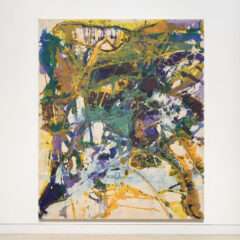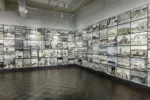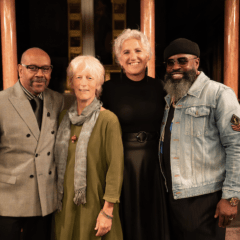Post by Tim A. Campbell
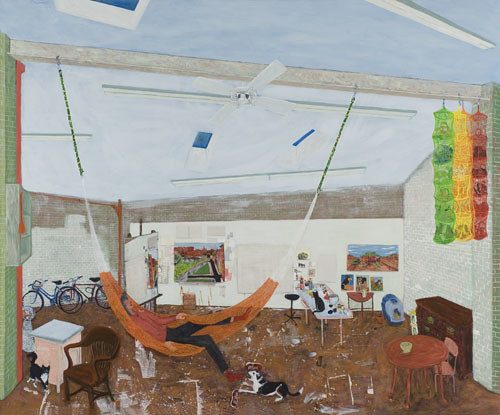
The pairing of Sarah McEneaney and Ellen Harvey at Locks Gallery since early November is a serendipitous counter-point between very different artists who share some subjects between them. Both exhibitions explore interior space. They are notably different in conception and execution, and the motives behind representation are on different trajectories. This common ground between the shows provides a lucid window into contemporary painting.
Personalized and intoxicating, McEneaney’s work is a reflection upon studios, fantasies, and private life both revealed and invented. Many paintings depict studios. They are the places where McEneaney makes paintings; but at once, places that her paintings invent. Invention here is like a kind of physical response, starting with the mixing of pigment and egg, and extending all the way through McEneaney’s rendition of forms. The color is almost too good to take. My first reaction to the work was that it was a tired motif, something many have attempted. McEneaney’s efforts are real, though, and so are her results; the intensity and invention in this show is hard-won and hard to find. The finished paintings have an honesty that owns the motif and dismisses any exhaustion.
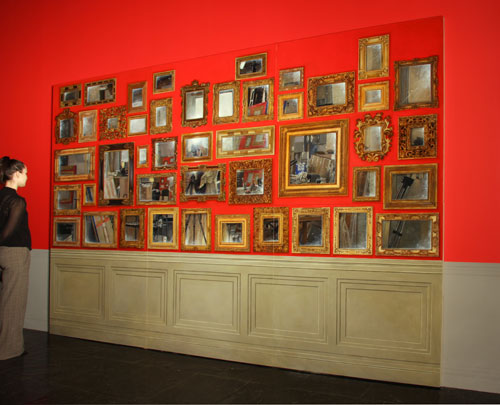
Ellen Harvey, Invisible Self-Portrait in my Studio, 2008, installed at Locks Gallery, oil on six wood panels, 8 x 12 feet
If McEneaney’s work has everything to do with inventiveness and painting itself, then Harvey’s show reacts with a remarkable meditation upon the frame, history, and the double-lie of the painted surface. To rephrase: the things that McEneaney looks past. There is a preoccupation in this show with the idea of reflection. Pictures play a curious, spectral role in Harvey’s two-panel oil paintings and installations, where each interior seems as if it could have innumerable versions and reflections. While Harvey’s exploration is complex and full of surprises, it is the underlying questions here that seem tired to me- what do we get from a painting practice that is so thoroughly concerned with interrogating itself, that content is almost ruled-out through irrelevance? It’s an inverse of Greenbergian purity- the pure surface has collapsed into a reflective trap-door, capable of anything and therefore, only able to choose nothing.
Don’t miss the show-Harvey’s work is taken down on 12/13, and McEneaney’s on 12/20.
—Tim Campbell is a Philadelphia artist living and working in Philadelphia. He teaches at the Pennsylvania College of Art and Design, in Lancaster, PA.


